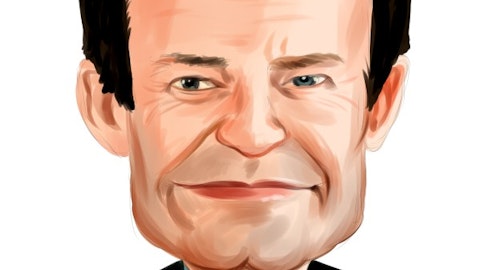So I think there could be a little bit more destocking on the motorized side in certain subsegments. The Towables side, our hope is that the destocking is largely finished. And if you look at October RVIA shipments and the SSI results, we actually feel as if some towable inventory was added back into the channel during that month. But we’ll see how quarter two fiscally for us plays out. I think dealers are going to try to kind of hold in place through the end of the calendar year here, these last couple of weeks. And then we’ll see how January and February play out. But we don’t anticipate, as our comments said, meaningfully material destocking continuing on Towables here as we begin calendar 2024, but we’ll watch that carefully.
Brandon Rollé: And just one last quick question. You had talked about addressing affordability through different tactics. Could you touch on if you’re able to, your conversations with your suppliers and maybe any additional price concessions that you might feel, are coming down the pipeline as you negotiate pricing?
Michael Happe: Our purchasing teams on a daily basis within the businesses and our strategic sourcing team here at the enterprise level that really works to leverage our scale and realize synergy across the portfolio. We’ve been very honest with our suppliers about the fairness needed in dealing with any deflation that’s happening in the marketplace and that we need to realize some of that. We do have some contracts that are commodity based and are sort of index based in terms of where those lower costs and how they just go and where they’re distributed. And then in some other relationships that’s more of a negotiation based on the transparency of the supplier. I will say we remain consistent that one source of bill of material pressure will continue to be motorized chassis, that category is not seeing the deflation that some of the other categories are across our RV and marine businesses.
And we are working carefully with all the major automotive chassis suppliers on how they can manage their cost to make sure that we can work with our dealers and then consumers on affordability there as well. We’re a premium manufacturer. Our strategy is not to strip or de-content our motorhome products to the bare minimum in order to keep the business flowing. So we need some help from our suppliers on the motorized chassis side to continue to navigate some of the pressures that they are seeing.
Operator: And our next question is going to come from the line of John Healy with Northcoast Research.
John Healy: Just one kind of off the trail kind of question here. Mike, I think you mentioned in the prepared remarks that in 2Q, that you guys would give kind of an update to the longer term view of the business or financial profile of it. Given that you guys laid that out maybe 18, 24 months ago, just kind of curious what’s prompting the update on that? And if there’s anything you might kind of steer us to, to thinking about that you guys might be evaluating as it relates to those items?
Michael Happe: In November of 2022, we communicated financial and operational targets relative to the end of our fiscal year 2025. So it was a three year long range set of targets. And given that the marketplace has changed dramatically since we were together, were investors in November of 2022, we felt it was time to formally update those and we’ll work to do so during our March 2024 earnings call. And I think what you’ll see during that call, we’ll probably have a little bit longer time range. We probably won’t talk about fiscal ’25 in terms of long range targets. We’ll probably be a little further out from that. And you’ll see an updated and refreshed set of financial and operational targets based on our best assumptions.
Candidly, we’re just trying to be helpful to our investors and to especially, you, the analysts with some longer range guidance for purposes of modeling and where we think especially the organic business can head in the future. So stay tuned. We’ll give you an update in March.
Operator: Our next question is going to come from the line of David Whiston with Morningstar.
David Whiston: I wanted to go back to the SG&A buckets you laid out, Mike, in terms of just the incremental spending. Basically, some of that is very customer focused and product focused and some of that is more your internal systems. And I’m just curious if you could talk a little bit more about how much — at a very high level, how much is more of it going to the product side or just the internal side? And you mentioned ERP. I mean, you guys have been doing ERP upgrades, I think, for years. Is this a new upgrade or the ongoing one that was a multiyear one in the first place?
Michael Happe: I’ll talk about ERP here real quickly. We continue to finish the long project we’ve had around our Winnebago branded businesses and some of our enterprise functions relative to an ERP system there. And there is a light at the end of the tunnel here over probably the next — probably the next 18 to 24 months in terms of that project. But we have now other ERP systems that we’ve obviously inherited through acquisitions of the other brands and we have to do some moderate upgrades to those from time to time. And there’s one particularly here in the short term, and I won’t get into the specifics that we are working on. I would say probably the balance of the SG&A investments we’re making are about around those three areas engineering, digital asset investment and IT systems is probably relatively evenly balanced.




